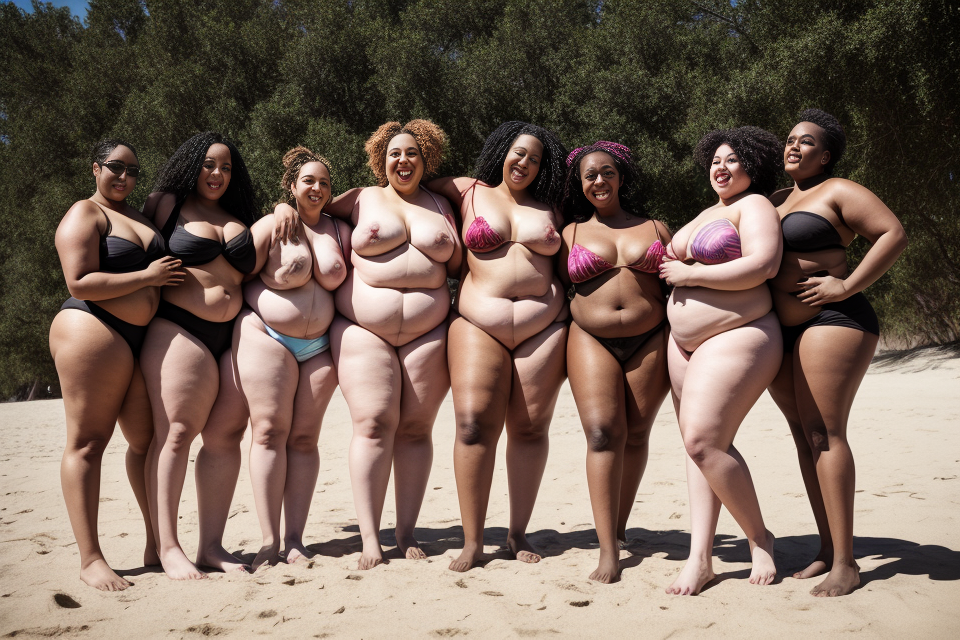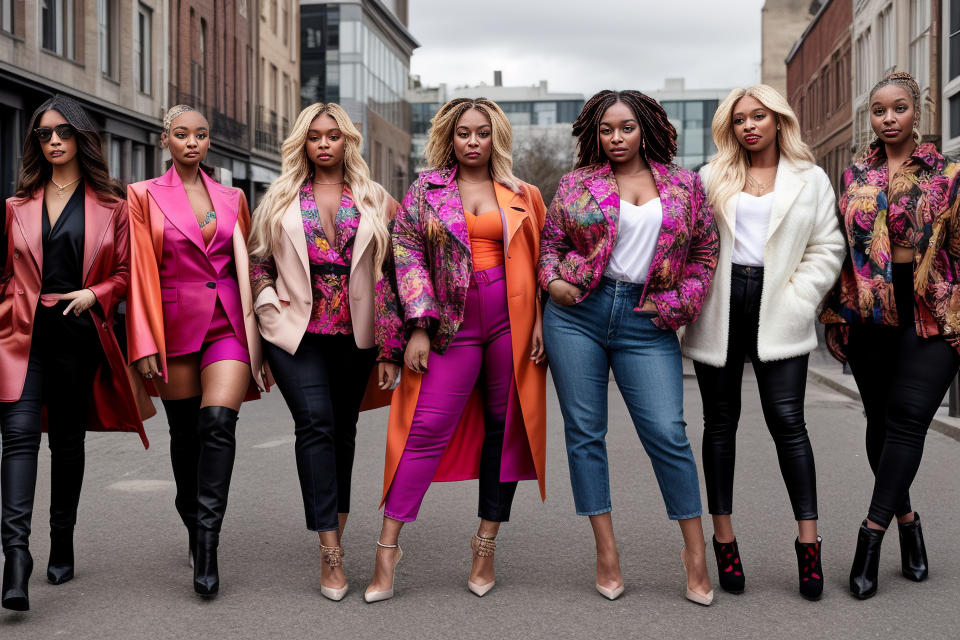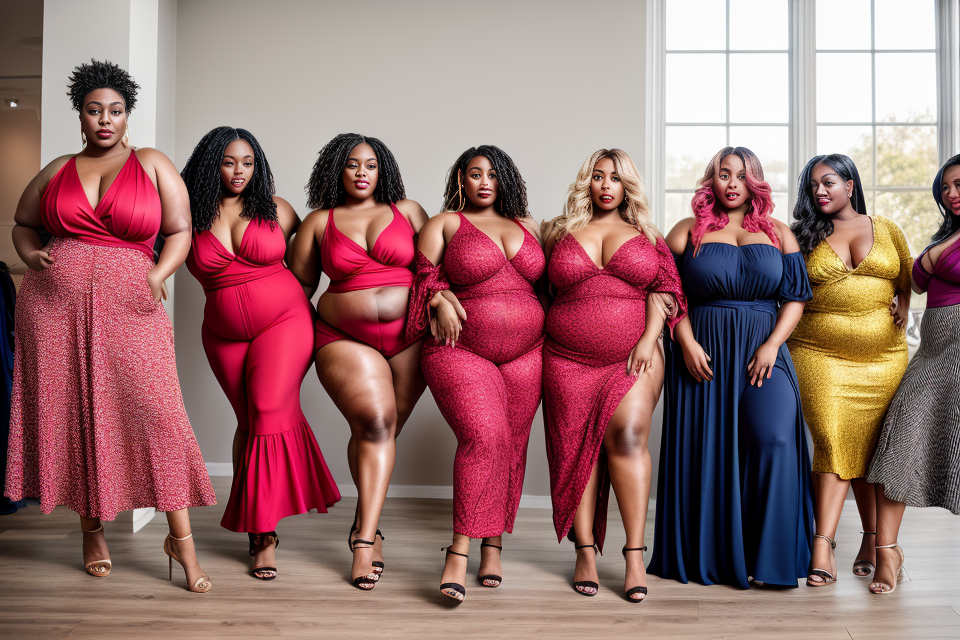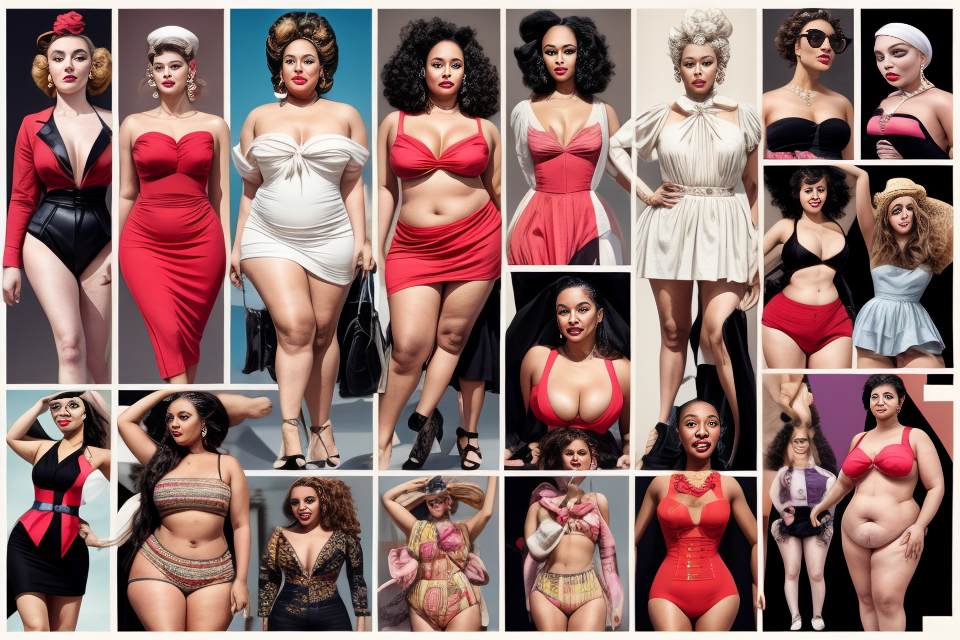Body positivity is a social movement that aims to celebrate and embrace all body types, regardless of size, shape, and appearance. The movement has gained significant traction in recent years, with people of all ages and backgrounds coming together to promote self-love and body acceptance. But what sparked this revolution? What really started the body positivity movement?
In this article, we will explore the origins of the body positivity movement and trace its evolution over the years. We will delve into the various factors that contributed to its rise, including social media, fashion, and popular culture. We will also examine the impact that the movement has had on society and the ways in which it has empowered individuals to love and accept their bodies for all their imperfections. So, join us as we take a deep dive into the world of body positivity and discover what really started this transformative movement.
The body positivity movement was sparked by a growing frustration with the unrealistic beauty standards that were being promoted by the media and society at large. These standards often led to feelings of inadequacy and low self-esteem among individuals who did not fit into the narrow definitions of beauty. The movement began to gain momentum as people began to challenge these standards and celebrate diversity and inclusivity. Social media played a significant role in the spread of the movement, as individuals began to share their own stories and experiences, and to celebrate the beauty of all bodies, regardless of size, shape, or appearance. The body positivity movement has since become a global phenomenon, inspiring people of all ages and backgrounds to embrace their bodies and to fight against the harmful effects of unrealistic beauty standards.
The Roots of Body Positivity
Historical Context
- Evolution of societal beauty standards
- Ancient civilizations: Worship of the human form
- Middle Ages: Ideal of beauty centered on religion and modesty
- Renaissance: Celebration of the human body in art
- Industrial Revolution: Emergence of the “ideal” body type
- 20th century: Advancements in media and advertising promoting unrealistic beauty standards
- The rise of the feminist movement
- Early 20th century: First-wave feminism and the suffrage movement
- 1960s and 1970s: Second-wave feminism and the emergence of feminist art and theory
- 1990s and 2000s: Third-wave feminism and the focus on body positivity and self-acceptance
- The impact of social media and the internet on the feminist movement and body positivity
Key Figures and Influences
Feminist authors and activists
The body positivity movement has its roots in the feminist movement of the 1960s and 1970s. Feminist authors and activists like Susan B. Anthony, Elizabeth Cady Stanton, and Gloria Steinem played a significant role in shaping the conversation around women’s bodies and their rights. They argued that women should have control over their own bodies and that their bodies should not be used against them.
One of the most influential feminist authors was Adrienne Rich, who wrote extensively about the politics of the body. In her book “Of Woman Born: The Dynamics of Outlaw Motherhood,” Rich argued that women’s bodies were politicized and used to control them. She also explored the concept of “bodily autonomy,” which is central to the body positivity movement.
Celebrity role models
Another key influence on the body positivity movement were celebrity role models who challenged traditional beauty standards. In the 1990s, supermodels like Naomi Campbell, Cindy Crawford, and Claudia Schiffer became famous for their curvy figures and their refusal to conform to the thin and waifish standards of the time. These models used their platforms to promote body positivity and to encourage women to embrace their own bodies, regardless of size or shape.
In more recent years, celebrities like Jennifer Lawrence, Lena Dunham, and Emma Watson have continued to champion body positivity and to challenge traditional beauty standards. They have used their platforms to promote body diversity and to encourage women to love and accept their bodies, just as they are.
The Shift in Perspective
The Impact of Social Media
The impact of social media on the body positivity movement cannot be overstated. With the rise of platforms like Instagram, activists have been able to share their messages with a wider audience than ever before. This has allowed for a more diverse range of bodies to be represented and celebrated, leading to a greater sense of acceptance and understanding of body diversity.
One of the most significant ways that social media has impacted the body positivity movement is through the creation of a space for individuals to share their stories and experiences. Activists have used platforms like Instagram to share their own journeys towards body acceptance, providing inspiration and support for others who may be struggling with similar issues.
Furthermore, social media has also allowed for the creation of communities and networks of individuals who are passionate about body positivity. This has led to a greater sense of solidarity and collective action, as individuals are able to come together to promote a more inclusive and accepting society.
Additionally, social media has also played a role in challenging traditional beauty standards and norms. Through the use of hashtags and social media campaigns, activists have been able to draw attention to the ways in which these standards can be harmful and exclusionary. By highlighting the diversity of human bodies and experiences, activists have been able to challenge the notion that there is a single, universal standard of beauty.
In conclusion, the impact of social media on the body positivity movement cannot be overstated. Through the creation of spaces for sharing stories, the development of communities, and the challenge of traditional beauty standards, social media has played a critical role in promoting body acceptance and diversity.
Changing the Narrative
Re-defining Beauty Standards
The body positivity movement can be traced back to the rejection of traditional beauty standards that have been prevalent in society for centuries. These standards, which prioritize thinness, youth, and a certain level of physical perfection, have been deeply ingrained in our culture, perpetuating a cycle of self-hatred and low self-esteem. The body positivity movement sought to challenge these norms by embracing diversity and celebrating all body types.
Promoting Diversity and Inclusivity
The body positivity movement has been instrumental in promoting diversity and inclusivity in society. For too long, individuals who did not fit into traditional beauty standards have been marginalized and made to feel invisible. The body positivity movement seeks to challenge this by promoting the idea that all bodies are worthy of love and respect, regardless of size, shape, or ability.
The movement has been instrumental in creating a space for individuals to celebrate their bodies and embrace their uniqueness. It has also been a platform for individuals to share their stories and experiences, creating a sense of community and solidarity.
The body positivity movement has also played a significant role in the fashion and beauty industries, pushing for more inclusive sizing and representation in advertising. By promoting diversity and inclusivity, the movement has helped to create a more accepting and compassionate society, where individuals of all body types can feel seen and heard.
Body Positivity Today
The Evolution of the Movement
- Influential social media campaigns
- Increased visibility of diverse bodies
- Advocacy for self-love and acceptance
The evolution of the body positivity movement can be traced back to several key factors that have contributed to its growth and expansion over the years. One of the primary drivers of this movement has been the rise of social media, which has provided a platform for individuals to share their stories and experiences related to body image and self-acceptance.
Social media campaigns such as the “Body Positive” hashtag on Instagram and Tumblr, which encourages individuals to post unfiltered photos of themselves and celebrate their bodies, have played a significant role in bringing attention to the issue of body image and promoting self-love. These campaigns have not only created a space for individuals to express themselves but have also inspired countless others to challenge traditional beauty standards and embrace their own unique bodies.
Another significant factor in the evolution of the body positivity movement has been the increased visibility of diverse bodies in the media and popular culture. The movement has expanded to include individuals from different racial, ethnic, and cultural backgrounds, as well as those with disabilities, gender non-conforming individuals, and those outside of the traditional beauty standards. This increased representation has helped to challenge the narrow and often harmful beauty standards that have historically been perpetuated by the media and society at large.
In addition to social media campaigns and increased representation, the body positivity movement has also been driven by advocacy for self-love and acceptance. This has included initiatives such as the promotion of healthy body image and the normalization of nudity and body fat, as well as the encouragement of individuals to speak out against body shaming and discrimination. By promoting self-love and acceptance, the body positivity movement has helped to empower individuals to take control of their own bodies and challenge societal expectations and norms.
Overall, the evolution of the body positivity movement has been driven by a combination of social media campaigns, increased representation, and advocacy for self-love and acceptance. As the movement continues to grow and evolve, it has the potential to create a more inclusive and accepting society, where individuals are free to express themselves and love their bodies without fear of judgment or discrimination.
Current Challenges and Debates
- Commercialization and appropriation
- The body positivity movement has faced criticism for being co-opted by mainstream media and commercial interests, leading to the appropriation of its core principles and messages.
- This commercialization has raised concerns about the authenticity of the movement and its potential to become a tool for profit rather than a genuine effort to promote self-acceptance and body diversity.
- As a result, some critics argue that the movement has lost its original intent and has become more focused on selling products and creating a market for specific body types rather than promoting a more inclusive and diverse range of body types.
- The role of social media influencers
- Social media influencers have played a significant role in the body positivity movement, providing a platform for individuals to share their stories and promote body acceptance.
- However, there are concerns about the impact of social media influencers on the movement, as some argue that they perpetuate unrealistic beauty standards and reinforce societal pressure to conform to specific body types.
- Additionally, the use of hashtags and sponsored posts by influencers has been criticized for commercializing the movement and undermining its message of self-acceptance and body diversity.
- Therefore, there is a need for more responsible and authentic representation of body positivity by social media influencers, in order to ensure that the movement remains true to its core values and goals.
The Future of Body Positivity
Ongoing Efforts and Advocacy
The body positivity movement has come a long way since its inception, and it continues to evolve and gain momentum. The ongoing efforts and advocacy play a crucial role in shaping the future of body positivity. Here are some of the ways in which this is happening:
Grassroots campaigns and initiatives
One of the key drivers of the body positivity movement has been the emergence of grassroots campaigns and initiatives. These campaigns are often led by individuals or small groups who are passionate about promoting body positivity and challenging harmful beauty standards. Some examples of grassroots campaigns include the “Eff Your Beauty Standards” movement, which encourages people to reject societal beauty standards, and the “Body Love” movement, which focuses on self-acceptance and self-love.
Collaboration among activists and organizations
Another important aspect of the ongoing efforts and advocacy is the collaboration among activists and organizations. This collaboration allows for the sharing of resources, knowledge, and ideas, and it helps to amplify the message of body positivity. For example, the Body Positive Coalition is an organization that brings together activists, organizations, and businesses to promote body positivity and challenge harmful beauty standards.
Social media and digital platforms
Social media and digital platforms have also played a significant role in the ongoing efforts and advocacy. These platforms provide a space for individuals to share their stories, connect with others, and raise awareness about body positivity. For example, the hashtag #BodyPositivity has been used over 5 million times on Instagram, and it has helped to create a community of individuals who are committed to promoting body positivity.
Educational initiatives
Finally, educational initiatives are also an important aspect of the ongoing efforts and advocacy. These initiatives aim to educate individuals about the harmful effects of societal beauty standards and to promote body positivity. For example, some schools and universities have introduced body positivity curriculums, which teach students about the importance of self-acceptance and self-love.
Overall, the ongoing efforts and advocacy of the body positivity movement are essential in promoting self-acceptance, challenging harmful beauty standards, and creating a more inclusive and diverse society. By working together, activists, organizations, and individuals can continue to drive the body positivity movement forward and create a brighter future for all.
Continuing the Conversation
The body positivity movement has come a long way since its inception, but it is important to note that this is not a one-time conversation. The ongoing dialogue and education surrounding body positivity is crucial in ensuring that it remains a relevant and impactful movement. In order to continue the conversation, it is necessary to address new challenges and emerging issues.
Importance of Ongoing Dialogue and Education
The body positivity movement has gained significant traction in recent years, but it is important to remember that it is an ongoing conversation. The movement must continue to evolve and adapt to the changing needs and perspectives of society. In order to do so, it is crucial to engage in ongoing dialogue and education.
This includes not only discussing the importance of body positivity, but also examining the ways in which it can be applied in various contexts. It is also important to engage in conversations around the ways in which society perpetuates negative body image, and how these attitudes can be challenged and changed.
Addressing New Challenges and Emerging Issues
As the body positivity movement continues to gain momentum, it is important to be aware of new challenges and emerging issues. This includes not only the ways in which society perpetuates negative body image, but also the ways in which the movement itself can be improved and expanded.
One of the biggest challenges facing the body positivity movement is the perpetuation of unrealistic beauty standards through the media and advertising. This can make it difficult for individuals to feel positive about their bodies, and can contribute to body dissatisfaction and negative self-esteem. It is important to continue to push back against these unrealistic standards, and to promote more inclusive and diverse representations of beauty.
Another challenge facing the body positivity movement is the need to address intersectionality. While the movement has made significant strides in promoting body positivity, it is important to recognize that not all individuals have the same experiences or face the same challenges. It is important to continue to expand the conversation to include the experiences of individuals from a variety of backgrounds and communities.
In conclusion, the body positivity movement must continue to evolve and adapt in order to remain relevant and impactful. This includes engaging in ongoing dialogue and education, as well as addressing new challenges and emerging issues. By doing so, the movement can continue to promote body positivity and challenge negative attitudes towards bodies of all shapes and sizes.
FAQs
1. What is the body positivity movement?
The body positivity movement is a social and cultural movement that promotes acceptance and appreciation of all body types, regardless of size, shape, or appearance. It aims to challenge traditional beauty standards and promote self-love and self-acceptance.
2. When did the body positivity movement start?
The body positivity movement gained momentum in the mid-2010s, but its roots can be traced back to the fat acceptance movement of the 1960s and 1970s. The modern body positivity movement can also be attributed to the rise of social media, which has provided a platform for individuals to share their stories and experiences related to body image and self-acceptance.
3. Who started the body positivity movement?
The body positivity movement is not attributed to a single individual or organization. It is a grassroots movement that has gained momentum through the efforts of many individuals and organizations who have advocated for body acceptance and self-love. Some notable figures in the movement include fat activists like Judith Lightfoot and Marilyn Monroe, as well as contemporary influencers like Megan Crabbe and Tess Holliday.
4. What sparked the body positivity movement?
The body positivity movement was sparked by a combination of factors, including the frustration with traditional beauty standards, the rise of social media, and the experiences of individuals who had struggled with body image issues. The movement was also influenced by other social and cultural movements, such as the feminist movement and the LGBTQ+ rights movement, which challenged traditional norms and promoted acceptance and diversity.
5. How has the body positivity movement impacted society?
The body positivity movement has had a significant impact on society by challenging traditional beauty standards and promoting acceptance and self-love. It has helped to create a more inclusive and diverse cultural landscape, and has inspired individuals to embrace their bodies and celebrate their unique features. The movement has also led to increased representation of diverse body types in media and advertising, and has contributed to a broader conversation about body image and self-esteem.



